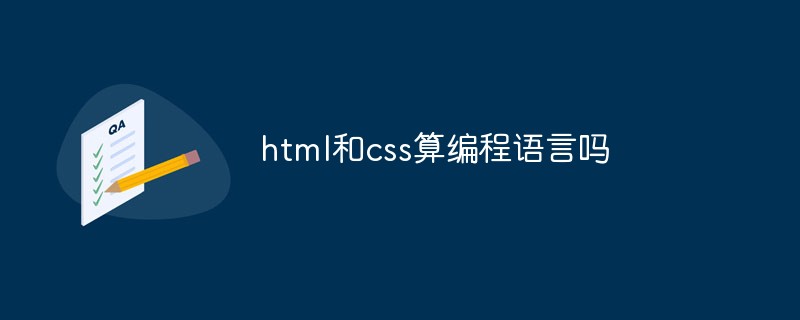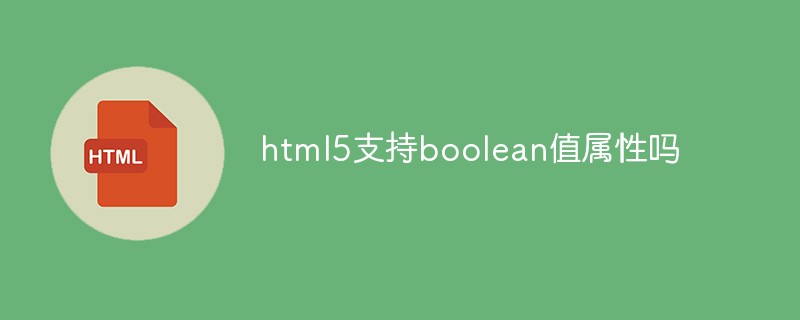htmlThe code for adding pictures is "
". The src attribute is used to specify the path of the picture. The path can be a relative path or an absolute path. A relative path is a path relative to the current HTML file. An absolute path is a complete URL, which can be a file path on the local file system or a file path on a remote server. The alt attribute is used to provide alternative text for the image. The alternative text is in the image. Displaying when it cannot be displayed also helps with accessibility.

Operating system for this tutorial: Windows 10 system, HTML5 version, Dell G3 computer.
HTML is a markup language used to build the structure and content of web pages. Adding images to web pages is one of the very common needs. Below, I will answer the code of how to add pictures in HTML in 1,500 words from a programmer's perspective.
In HTML, adding images requires the use of tags. This tag is an empty tag and does not need to be closed. Here is an example of a basic image tag:
<img src="/static/imghwm/default1.png" data-src="image.jpg" class="lazy" alt="图片描述">
In the above code, we use the src attribute to specify the path of the image, and the alt attribute is used to provide a description of the image. Below I will explain the use of these properties and some other common properties in detail.
src attribute: This attribute is used to specify the path of the image. Paths can be relative or absolute. Relative paths are relative to the current HTML file. An absolute path is a complete URL, which can be a file path on the local file system or a file path on a remote server. For example:
Relative path: src="images/image.jpg"
Absolute path: src="https://example.com/images/image.jpg"
Note: If the image file and HTML file are in the same directory, you only need to provide the file name.
alt attribute: This attribute is used to provide alternative text for the image. Alternate text, which displays when an image cannot be displayed, also helps with accessibility. For example:
<img src="/static/imghwm/default1.png" data-src="image.jpg" class="lazy" alt="一只可爱的猫咪">
width and height attributes: These two attributes are used to specify the width and height of the image. Can be defined using pixels (px), percentage (%), or other units. For example:
<img src="/static/imghwm/default1.png" data-src="image.jpg" class="lazy" style="max-width:90%" height="200px" alt="What is the code to add pictures in html" >
Note: If only one of the attributes is specified, the browser will automatically calculate the value of the other attribute in a way that maintains the aspect ratio of the image.
title attribute: This attribute is used to provide the title of the image, which is displayed when the mouse is hovering over the image. For example:
<img src="/static/imghwm/default1.png" data-src="image.jpg" class="lazy" title="这是一张美丽的风景图片" alt="What is the code to add pictures in html" >
align attribute: This attribute is used to specify the alignment of the image in the text. Can be set to left (left-aligned), right (right-aligned), or middle (center-aligned). For example:
<img src="/static/imghwm/default1.png" data-src="image.jpg" class="lazy" align="left" alt="What is the code to add pictures in html" >
border attribute: This attribute is used to specify the border width of the picture. Can be defined using pixels (px) or other units. For example:
<img src="/static/imghwm/default1.png" data-src="image.jpg" class="lazy" border="1px" alt="What is the code to add pictures in html" >
In addition to the above properties, there are some other properties that can be used to further control the display and behavior of the image. For example:
usemap attribute: used to specify a client-side image map to trigger specific actions when the user clicks on the image.
ismap attribute: used to specify whether the image is a server-side image mapping.
crossorigin attribute: used to specify how to handle cross-origin image requests.
loading attribute: used to specify the loading method of the image, which can be lazy (lazy loading) or eager (immediate loading).
srcset attribute: used to specify a set of alternative images. The browser will select the most appropriate image to load based on the screen size and resolution.
To summarize, by using tags and related attributes, we can easily add images in HTML. These properties can be used to control the path, size, alignment, borders, alternative text, etc. of the image. At the same time, other properties can be used to further control the behavior and loading of images. I hope this answer can help you understand the code for adding images in HTML.
The above is the detailed content of What is the code to add pictures in html. For more information, please follow other related articles on the PHP Chinese website!
 HTML超文本标记语言--超在那里?(文档分析)Aug 02, 2022 pm 06:04 PM
HTML超文本标记语言--超在那里?(文档分析)Aug 02, 2022 pm 06:04 PM本篇文章带大家了解一下HTML(超文本标记语言),介绍一下HTML的本质,HTML文档的结构、HTML文档的基本标签和图像标签、列表、表格标签、媒体元素、表单,希望对大家有所帮助!
 html和css算编程语言吗Sep 21, 2022 pm 04:09 PM
html和css算编程语言吗Sep 21, 2022 pm 04:09 PM不算。html是一种用来告知浏览器如何组织页面的标记语言,而CSS是一种用来表现HTML或XML等文件样式的样式设计语言;html和css不具备很强的逻辑性和流程控制功能,缺乏灵活性,且html和css不能按照人类的设计对一件工作进行重复的循环,直至得到让人类满意的答案。
 web前端笔试题库之HTML篇Apr 21, 2022 am 11:56 AM
web前端笔试题库之HTML篇Apr 21, 2022 am 11:56 AM总结了一些web前端面试(笔试)题分享给大家,本篇文章就先给大家分享HTML部分的笔试题(附答案),大家可以自己做做,看看能答对几个!
 HTML5中画布标签是什么May 18, 2022 pm 04:55 PM
HTML5中画布标签是什么May 18, 2022 pm 04:55 PMHTML5中画布标签是“<canvas>”。canvas标签用于图形的绘制,它只是一个矩形的图形容器,绘制图形必须通过脚本(通常是JavaScript)来完成;开发者可利用多种js方法来在canvas中绘制路径、盒、圆、字符以及添加图像等。
 html5废弃了哪个列表标签Jun 01, 2022 pm 06:32 PM
html5废弃了哪个列表标签Jun 01, 2022 pm 06:32 PMhtml5废弃了dir列表标签。dir标签被用来定义目录列表,一般和li标签配合使用,在dir标签对中通过li标签来设置列表项,语法“<dir><li>列表项值</li>...</dir>”。HTML5已经不支持dir,可使用ul标签取代。
 html中document是什么Jun 17, 2022 pm 04:18 PM
html中document是什么Jun 17, 2022 pm 04:18 PM在html中,document是文档对象的意思,代表浏览器窗口的文档;document对象是window对象的子对象,所以可通过“window.document”属性对其进行访问,每个载入浏览器的HTML文档都会成为Document对象。
 html5支持boolean值属性吗Apr 22, 2022 pm 04:56 PM
html5支持boolean值属性吗Apr 22, 2022 pm 04:56 PMhtml5支持boolean值属性;boolean值属性指是属性值为true或者false的属性,如input元素中的disabled属性,不使用该属性表示值为flase,不禁用元素,使用该属性可以不设置属性值表示值为true,禁用元素。

Hot AI Tools

Undresser.AI Undress
AI-powered app for creating realistic nude photos

AI Clothes Remover
Online AI tool for removing clothes from photos.

Undress AI Tool
Undress images for free

Clothoff.io
AI clothes remover

AI Hentai Generator
Generate AI Hentai for free.

Hot Article

Hot Tools

ZendStudio 13.5.1 Mac
Powerful PHP integrated development environment

SAP NetWeaver Server Adapter for Eclipse
Integrate Eclipse with SAP NetWeaver application server.

EditPlus Chinese cracked version
Small size, syntax highlighting, does not support code prompt function

DVWA
Damn Vulnerable Web App (DVWA) is a PHP/MySQL web application that is very vulnerable. Its main goals are to be an aid for security professionals to test their skills and tools in a legal environment, to help web developers better understand the process of securing web applications, and to help teachers/students teach/learn in a classroom environment Web application security. The goal of DVWA is to practice some of the most common web vulnerabilities through a simple and straightforward interface, with varying degrees of difficulty. Please note that this software

Atom editor mac version download
The most popular open source editor







